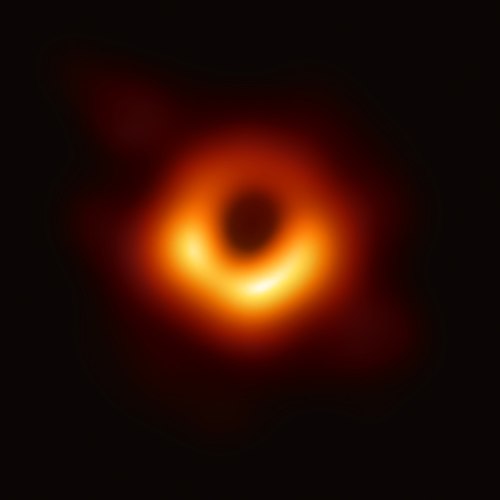As part of the Event Horizon Telescope Collaboration, the working group presented a stunning image of the Sagittarius black hole
At 33, she is not only an assistant professorCaltech, but also a veteran of two major scientific discoveries. Bowman is an expert in the field of computational visualization, namely the development of algorithms for observing distant phenomena. She helped create the program that led to the publication of the first image of a black hole in the distant galaxy M87 in 2019.
 Photo: ETH
Photo: ETH
Now she has again played a key role increating a groundbreaking image of the supermassive black hole at the center of our own Milky Way galaxy—the cosmic body known as Sagittarius A*. Her working group within the Event Horizon Telescope Collaboration, which unveiled the stunning image on Thursday, was tasked with piecing it together from a mountain of data collected by telescopes around the world.
Why is this picture important?
The M87 shot was so breathtaking because itwas the first. It was the first opportunity to see a black hole. But the holy grail of the Event Horizon has always been the Sagittarius A* image, says Bowman. The reason is that scientists were interested in correlating their observations and the real image of Sgr A*.
Therefore, although this is the second image of a black hole,it's actually more exciting. After all, it “can be used to conduct more tests of our understanding of gravity,” the scientist emphasizes. Thus, EHT project scientist Jeffrey Bauer from the Academia Sinica Institute of Astronomy and Astrophysics said that scientists “were stunned by how well the size of the ring agreed with the predictions of Einstein’s general theory of relativity.”
Why was it harder to make?
As it turned out, the Bowman team and other scientistscollected data for both M87* and Sgr A* in the same week. This happened back in 2017. However, it took the experts much longer to complete a complete image of Sgr A* than it did for M87*.
 Photo: ETH
Photo: ETH
Near the black hole in the center of the Milky Way“There’s a lot going on,” and that made it difficult for scientists to create an image, Bowman noted. “We are actually observing a black hole through the plane of the galaxy. And this means that the gas in it greatly scatters the image. It feels like we’re looking at a black hole through a frosted window.” But it turned out that this was just one problem.
The hard part is that the black hole is evolvingvery fast. “The gas in M87* and Sgr A moves at approximately the same speed. But while a complete revolution around M87 takes from several days to several weeks, Sgr A* takes minutes,” explains the scientist.
What will happen next?
"I think it's really justStart. And now that we know we have these extreme gravity labs, we can go back and improve our instruments and algorithms to see more and extract more science,” said Kate Bowman.
It turned out that her team had already taken the firstattempts to make a video of a black hole. As Bowman noted, her scientists have already “made a lot of progress, but have not yet reached their goal.” In the future, researchers will try to use more telescopes around the world and collect more data.
Read more
The monster at the center of our Galaxy: look at the photo of a black hole in the Milky Way
American satellite "saw" an unusual message from Earth
Published video from the rocket, which was launched from an experimental accelerator
</ p>